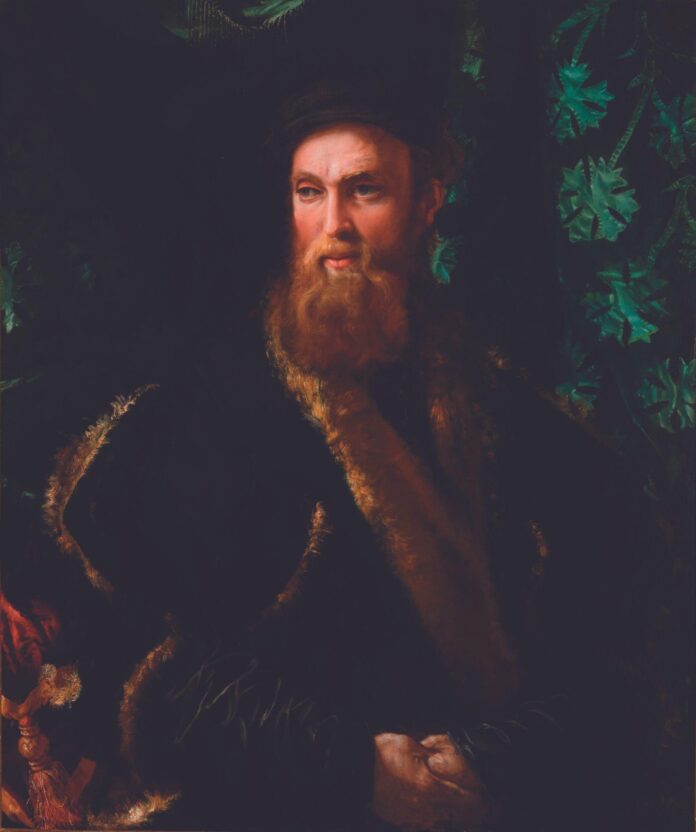Francesco Salviati, Bindo Altoviti (around 1545)
Metropolitan Museum of Art, New York
The Metropolitan Museum of Art has acquired a Renaissance portrait of exceptional quality depicting the papal banker Bindo Altoviti (oil on marble, around 1545), by the Italian master Francesco Salviati. “The artistic importance and historic magnitude of this painting cannot be overstated,” said Max Hollein, director of The Met. Altoviti, a noted patron of the arts, who was painted as a young man by Raphael (around 1515), is shown at the height of his powers as an international financial fixer. The painting was given by the trust of the late philanthropist Assadour O. Tavitian, which recently gave another work of the first rank— Portrait of a Woman (around 1575), by Giovanni Battista Moroni—to the Frick Collection. T.S.

© Monica Rizzolli
Monica Rizzolli, Fragments of an infinite Field #923 (2021)
Los Angeles County Museum of Art
Los Angeles County Museum of Art (Lacma) has announced a promised gift of 22 artworks minted on the blockchain— including Monica Rizzolli’s Fragments of an Infinite Field #923, a jpeg file delivered as a non-fungible token (NFT)—a collection that it says is the “first and largest” of its kind to enter an American art museum. The acquisition is courtesy of the collector who goes by the alias Cozomo de’ Medici and is allegedly the rapper Snoop Dogg, a long-time proponent of crypto and Web3. Works by 13 artists from around the world make up the acquisition, and together tell a “representative history of the cryptoart movement”, according to the museum’s announcement. They include artificial intelligence (AI) art by Claire Silver; NFT photography by Justin Aversano; and the first major decentralised book minted to the Ethereum blockchain, Neil Strauss’s Survive All Apocalypses (2021). C.V.

Courtesy Currier Museum of Art
David Teniers the Younger, Black Men and Women in a Tavern (around 1650)
Currier Museum of Art, Manchester, New Hampshire
The Currier Museum of Art has acquired an early depiction of free Black people in Europe, painted in Antwerp by David Teniers the Younger around 1650. The painting is remarkable for showing Black people in everyday garb, smoking and drinking—in a manner typical of “folk” genre scenes of the day, of which Teniers was the admired master—at a time when Black people were usually portrayed as slaves or Biblical figures, in exotic attire. The work is a gift of the Amsterdam art dealer Salomon Lilian. T.S.

























